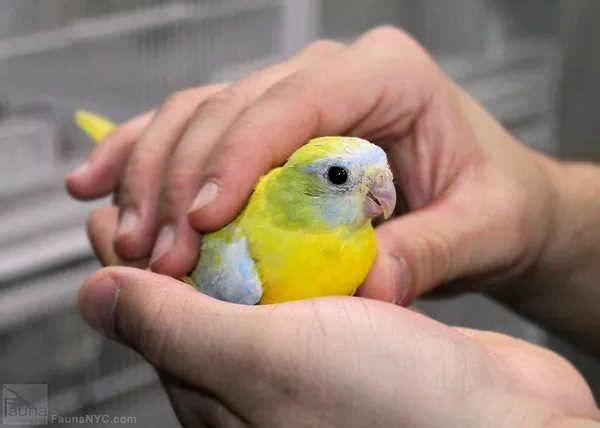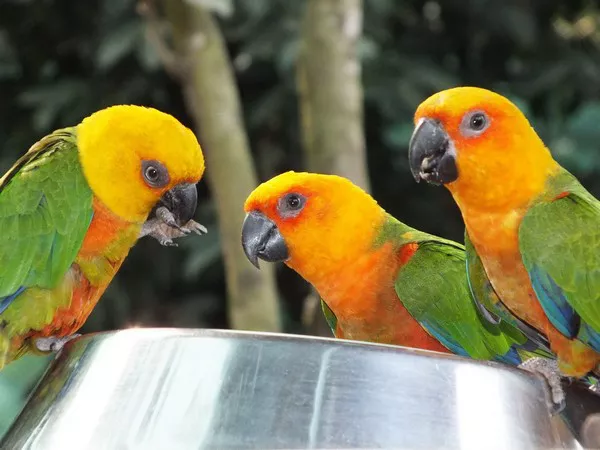The world of aviculture is brimming with diverse and captivating parrot species, each possessing its own unique traits and characteristics. Among these, the Indian Ringneck Parrot (Psittacula krameri manillensis) stands out not only for its vibrant plumage and striking appearance but also for its remarkable ability to mimic human speech. A question often asked by enthusiasts and potential pet owners is, “Does the Indian Ringneck Parrot talk?” In this article, we will delve into the fascinating world of this parrot species, exploring its talking capabilities, factors influencing speech, and tips for fostering meaningful communication with these intelligent and charming birds.
The Talking Ability of Indian Ringneck Parrots
Indian Ringneck Parrots are renowned for their exceptional talking ability. These parrots belong to the Psittacula genus, which includes species known for their vocalizations. While not all Indian Ringnecks develop the same level of talking proficiency, many have displayed impressive skills in mimicking human speech, sounds, and even melodies. Both males and females are capable of talking, although males are often considered to be more talkative and inclined to mimicry.
Factors Influencing Talking Ability
Several factors contribute to the talking ability of Indian Ringneck Parrots:
Individual Personality: Just like humans, each Indian Ringneck has a unique personality. Some are more outgoing and inclined to imitate sounds, while others may be quieter and less prone to mimicry.
Socialization and Interaction: Early and consistent socialization plays a crucial role in developing a parrot’s talking skills. Birds that are exposed to frequent human interaction and varied sounds during their early developmental stages are more likely to acquire and reproduce speech.
Environment and Exposure: The parrot’s living environment greatly impacts its ability to learn and reproduce sounds. A stimulating environment with exposure to conversations, music, and everyday noises provides more opportunities for the parrot to pick up sounds and words.
Age of Acquisition: Younger Indian Ringnecks are generally more receptive to learning new sounds and words. However, older birds can also learn to talk through patient and consistent training.
Consistency and Patience: Teaching a parrot to talk requires consistent repetition, patience, and positive reinforcement. The more frequently a word or phrase is repeated, the higher the chance the parrot will learn and reproduce it.
Tips for Fostering Talking in Indian Ringneck Parrots
Start Early: If you acquire an Indian Ringneck Parrot while it’s young, start exposing it to different sounds and words as early as possible. Young birds are more open to learning and adapting to new sounds.
Create a Stimulating Environment: Provide an enriching environment with a variety of sounds, including music, household noises, and conversations. This encourages the parrot to observe and attempt to reproduce the sounds.
Repetition and Positive Reinforcement: Repeat words and phrases consistently while interacting with your parrot. Use treats, praise, and rewards to reinforce successful attempts at mimicking sounds.
Conversational Interaction: Engage in conversations with your parrot regularly. Parrots are more likely to imitate sounds they hear frequently, so include them in your daily conversations.
Be Patient: Not all Indian Ringneck Parrots will become expert talkers, and some individuals may have limited speech capabilities. Be patient and understanding of your parrot’s unique abilities and inclinations.
Understanding Vocalizations Beyond Speech
While the Indian Ringneck Parrot’s ability to talk is impressive, it’s essential to recognize that vocalizations go beyond speech. These parrots communicate using a wide range of sounds, including chirps, squawks, whistles, and even non-verbal cues such as body language. Understanding and interpreting these vocalizations are crucial for building a strong bond and effective communication with your parrot.
Conclusion
In conclusion, the Indian Ringneck Parrot possesses a remarkable capacity for mimicking human speech and sounds. However, the extent of its talking ability varies among individuals and is influenced by factors such as personality, socialization, environment, and training. While some Indian Ringnecks may become proficient talkers, others may have limited speech capabilities. Regardless of their talking prowess, these parrots offer a world of captivating interactions through their diverse vocalizations and unique personalities. With patience, consistent training, and an enriching environment, you can foster a meaningful and engaging communication experience with your Indian Ringneck Parrot that goes beyond words.
Recommended reading:
























